- December 18, 2020
- Perspectives
Managing Express Lanes: Verification and Enforcement Technologies
Using Camera-Based and App-Based Approaches for Greater Efficiency
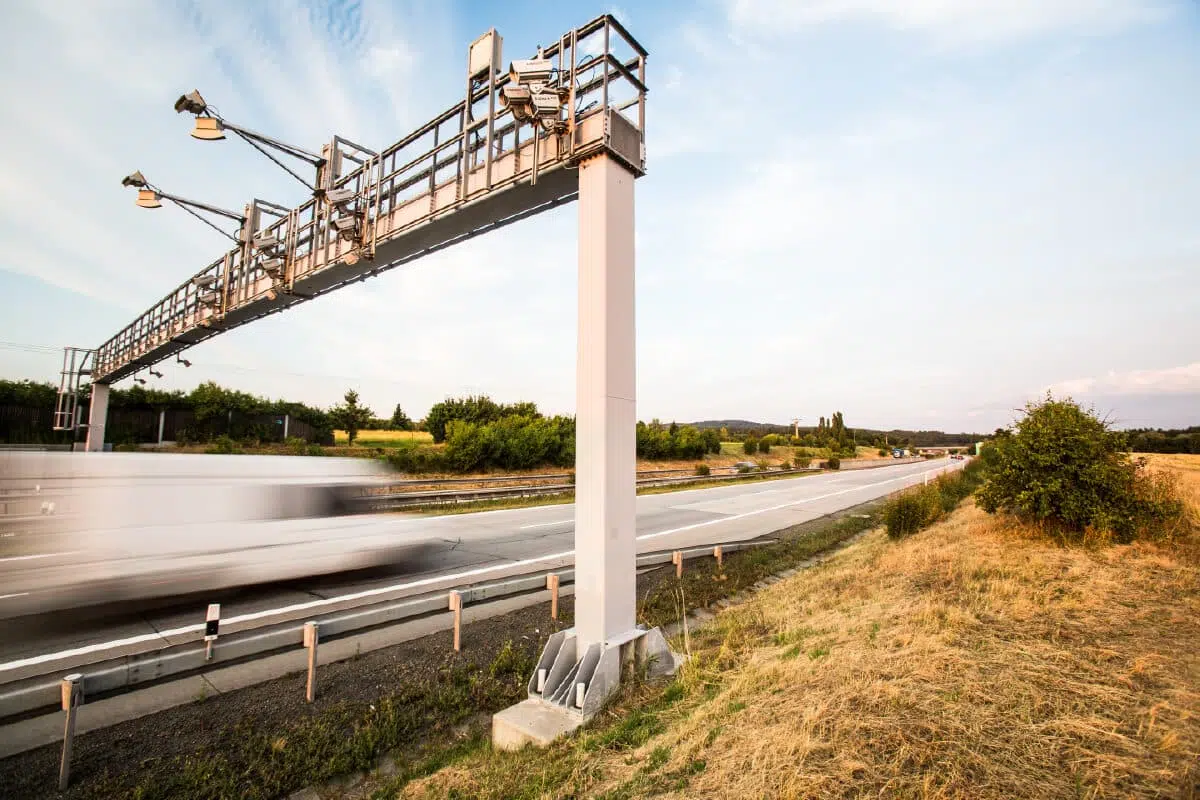

Chadi Chazbek, PE
Regional Vice President - Tolling
Will camera-based or smart phone app-based lane monitoring technologies pave a way forward for efficient and cost-effective HOV and toll lane enforcement? In a recent webinar hosted by IBTTA and TRB, Kimley-Horn’s Chadi Chazbek, PE, moderated a discussion with DOT planners from transportation agencies across the country about the reliability, efficiency, and lessons learned from two types of express lane management modes: automated enforcement through camera-based occupancy detection and smart phone app-based monitoring systems.
Across freeways in the United States, High Occupancy Vehicle (HOV) and express lanes ease the flow of traffic, actively managing congestion through specially designated lanes and pricing. This helps not only to manage rush hour gridlock but also to decrease single-occupancy vehicles on the road, maximizing the use of available lane capacity and providing more travel time reliability.
Enforcing the proper use of HOV and express lanes is a common challenge for many agencies. Violation rates as high as 30% are not uncommon. The improper use of these lanes not only hampers their effectiveness, but also leads to increased citations, fines, and operating costs. If high violation rates continue, the systems will struggle to efficiently manage congestion and stay compliant with FHWA requirements. To combat this, several camera-based occupancy detection and verification systems have been tested over the years by toll agencies with varying degrees of success.
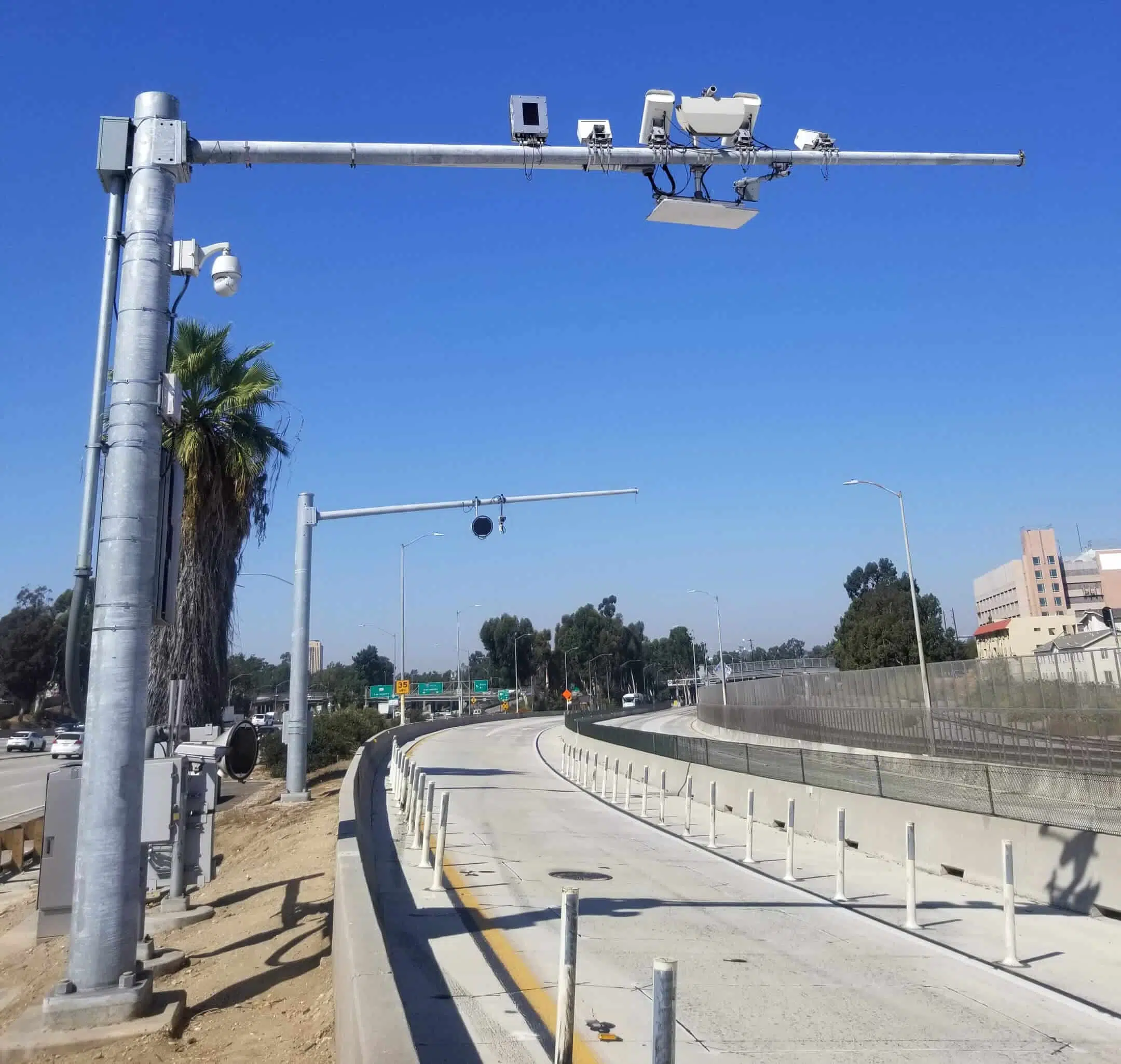
Photo courtesy of LA Metro
Overhead and side-mounted roadside equipment installed on the Metro ExpressLanes in Los Angeles as part of its camera-based occupancy detection system.
Camera-Based Approaches
Although recent technological advancements in camera-based systems allow for greater accuracy, many agencies continue to rely on visual field verification by an enforcement officer. This approach involves enforcement officers using special lanes and pre-designated enforcement zones rather than implementing a fully automated occupancy detection and enforcement system to issue violation notifications and citations.
Some agencies, like LA Metro, have begun to explore new camera-based approaches. The congestion management agency, which operates the express lanes on the I-10 and I-110 freeways in Los Angeles, tested an automated camera-based system in 2015, finding an accuracy rate of 85%. To determine how much the technology has improved in the years since then, LA Metro is currently testing another system. Using a near-infrared illuminator and a combination of front and side view cameras, the new system—which will be refined for a potential rollout in the near future—will identify the number of occupants in a vehicle, redacting images to maintain the privacy of the driver and any passengers.
While early trial results suggest the technology has improved in its accuracy, some lingering challenges include:
- Passenger side and third row seating view obstructions
- Child car seats that are difficult to capture on film
- Tinted windows
The Importance of Public Outreach
Barkev Tatevosian, Principal Transportation Planner for LA Metro ExpressLanes, says an essential part of its pilot project is public outreach. To ensure transparency, drivers are educated about what to expect in terms of toll costs, how the photos are taken and used, and the ways in which their privacy is protected.
Also recognizing the value of public involvement, Transurban—the agency responsible for managing three express lanes in the Northern Virginia region on I-95, I-395, and I-495—is testing a new camera-based vehicle occupancy detection network with a multi-pronged approach involving technology, public education and outreach campaigns, and targeted enforcement for repeat offenders.
Some of the unique features of the Transurban pilot include:
- The use of flashing beacons that identify repeat offenders and signal Highway Patrol to pull over the vehicle and cite with more confidence.
- A plan to deploy mobile VOD systems for increased coverage of the entire corridor.
- The use of dynamic message boards to display “HOV Enforced” signage and confirm violation fine cost.
- The implementation of a more driver-friendly process for collecting tolls from ineligible travelers.
Eric Coraggio, Project Manager for Transurban, says when a photo is sent to an offender, they are unlikely to dispute the image and some are even thankful to be shown the proper way to use the transponder.
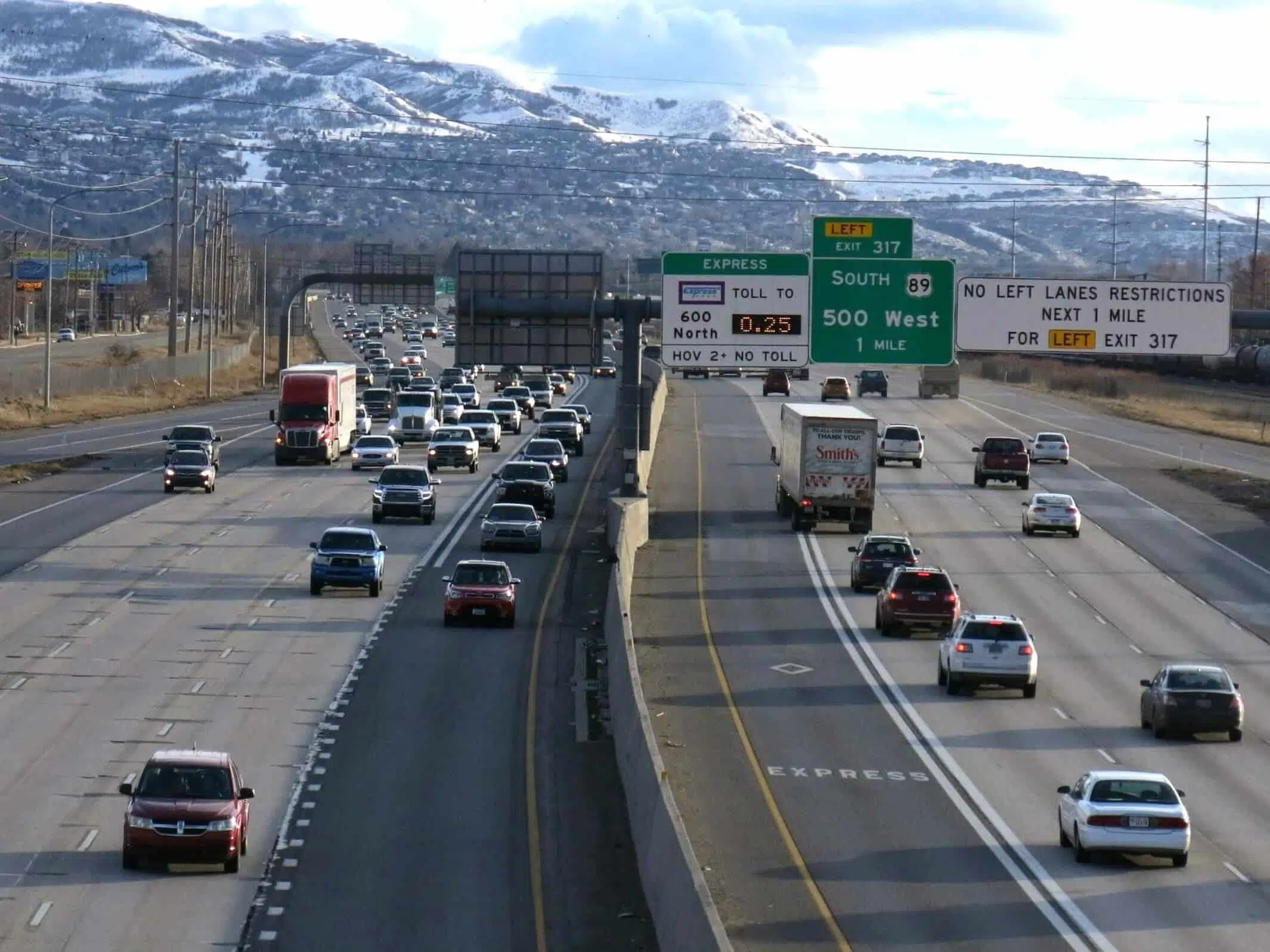
App-Based Approaches
Smartphones and apps have become ubiquitous, so transportation agencies such as the Utah Department of Transportation (UDOT) and the Texas Department of Transportation (TxDOT) are each teaming up with private sector firms to explore using app-based technology to improve HOV declaration for drivers and reduce enforcement costs.
App-Based Verification With Camera-Based Enforcement
UDOT has the longest continuous express lane in the country. The I-15 express lane has 65 tolling plazas and runs at 144 lane miles and growing, says Jamie Mackey, Operations Manager for the agency. Prior to September 2020, the UDOT system used an Express Pass for single-occupant vehicles, while HOV2+ vehicles, buses and motorcycles did not require a pass for using the HOV lane. After continuous driver offenses, UDOT decided to reevaluate its honor system methodology. UDOT implemented a combined solution of cameras and app-based technologies to combat violations by:
- Requiring vehicle transponders for all users
- Installing cameras to capture license plate numbers, bill, and fine vehicles without transponders
- Using an app-based verification system to confirm vehicle occupancy and waive the toll on the backend for proper carpool lane usage
Drivers using the app-based verification system initially set up a profile with their photo and transponder number. When embarking on a planned HOV lane ride, app users must also provide a picture of everyone in the car at the start and end of the trip. With photo matching technology, the verification system recognizes a vehicle’s occupants using facial signatures. Once the trip is completed, a toll credit is given to the driver. Drivers must complete eight app trips per month to qualify to participate in the program the following month.
UDOT has garnered valuable customer feedback through this program to keep improving the system and app capabilities. Obstacles UDOT is continuing to work through include:
- Accommodating drivers desiring the ability to create carpool rides mid-trip if they meet requirements
- Accommodating numerous smartphone configurations and battery life limitations. UDOT will need to plan alternative methods to manage occasional technical issues.
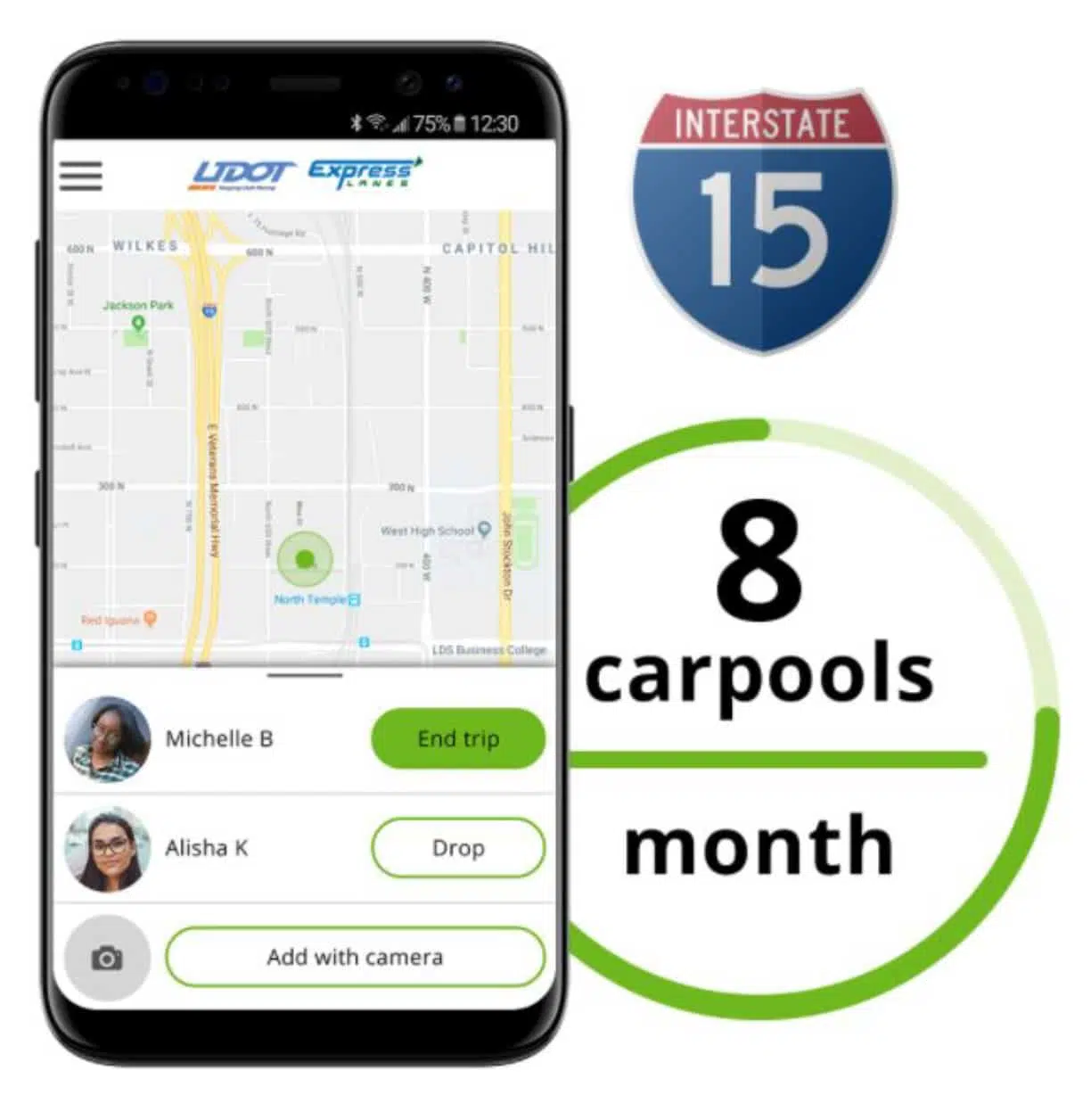
App-Based Verification With Proper Usage Guidance for Infractions
With an express lane split between two districts—Dallas and Fort Worth— the Texas Department of Transportation (TxDOT ) required separate, costly contracts with Highway Patrol to manage HOV infractions. Human error often occurred when offices attempted to properly verify the number of vehicle occupants on high-speed express lanes. Sometimes officers pulled over cars only to find a sleeping child in the back seat or that the lane was being used properly. With app-based technology, TxDOT has alleviated human error issues. Dan Lamers, Senior Program Manager for the North Central Texas Council of Governments says their system is not about enforcement—it’s about verification.
The system requires anyone traveling via the express lane to download the app and register with the car and toll tag. Using a smaller Bluetooth responder device held in the glovebox, the driver’s vehicle employs GPS to record the trip and the app verifies the number of people in the car.
Since going live on January 24, 2020, TxDOT reports participation from 30,000 registered vehicles and 35,000 users. In the nine months the app has been in operation, it has gained an 83.2% satisfaction rate, due in part to the independent customer service support provided by the app developer. In addition to removing the need for TxDOT to invest in a customer service center, the app provides a count of any infractions and behavioral changes—so far, only a 2.7% usage violation rate and a 99% change in users’ behavior after receiving communication about proper usage.
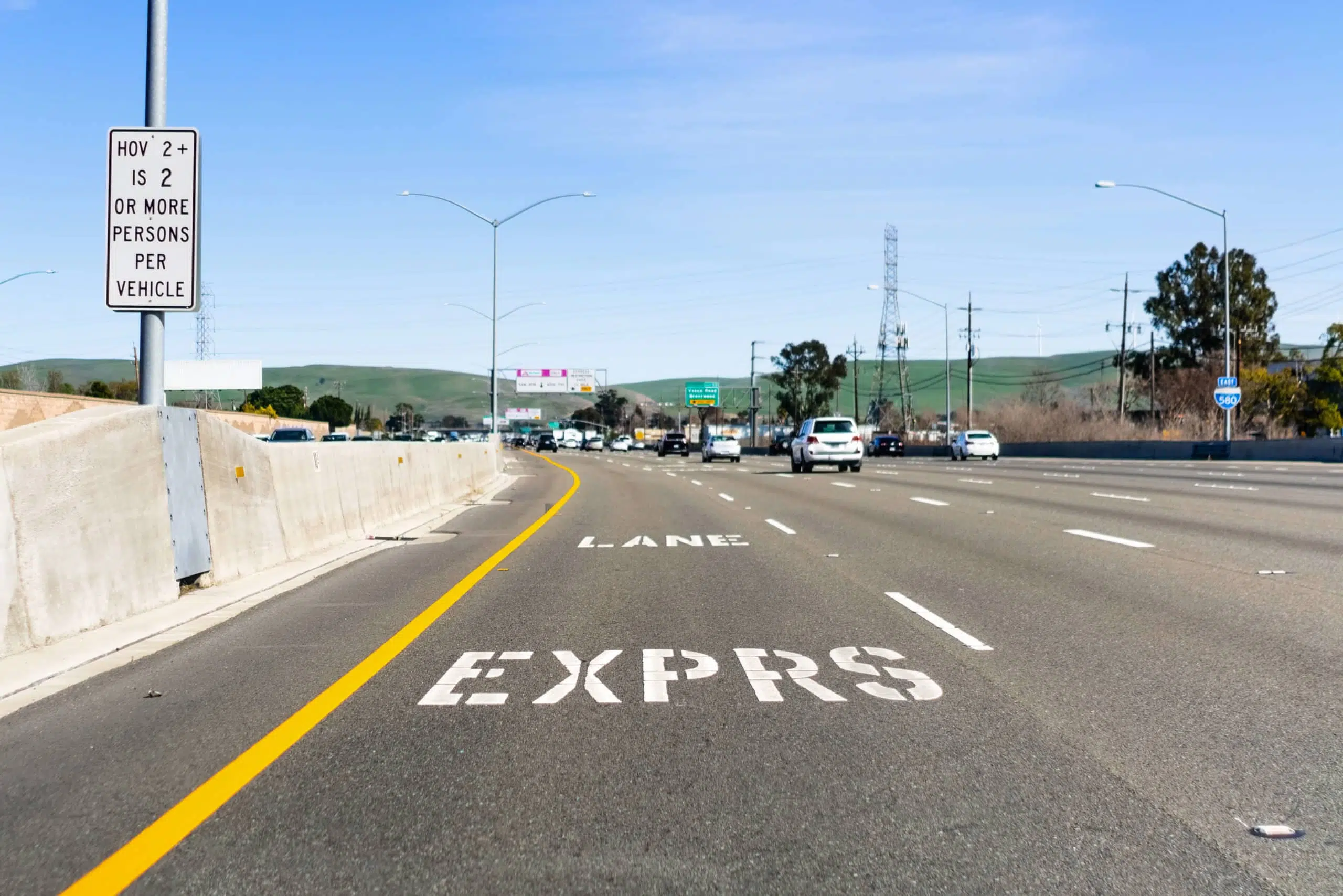
Looking Ahead
Both camera-based and app-based technologies are in the early stages of testing and deployment and continue to improve as technology advances and more lessons are learned from pilot programs. It is important to note that these systems are intended to collect tolls on express lanes—not issue citations for HOV violation. Camera-based systems require an initial capital investment to install, test, and integrate, which could pose a challenge for some agencies. Meanwhile, app-based systems are gaining interest from tolling agencies for their lower initial deployment costs, but still have a long road ahead to overcome obstacles such as providing service to passengers without smart phones, addressing privacy concerns, identifying children onboard, and accommodating users who form carpools mid-trip.
Whether camera-based or app-based technology is used, transparent communication and educational campaigns with the public are effective tools to reduce toll evasion.
Kimley Horn is proud to assist several toll agencies and departments of transportation across the United States with toll technology deployment and evaluation, HOV enforcement, managed lanes planning and design, and connected and automated vehicles technologies. For more information, please contact [email protected].
About the Authors

Chadi Chazbek, PE.
Chadi is a seasoned project manager specializing in delivering large roadway projects, including highway interchanges, through the Caltrans process. His strategic and innovative thinking, coupled with his working relationship with Caltrans District 4 and HQ staff, has manifested in some ground-breaking managed lanes projects that he has implemented in the State of California. He has led the implementation of the first express lane in the Bay Area, I-680 Southbound Express Lanes in Sunol, the first continuous access express lane on I-580 in the tri-valley, and the first shoulder running lane project on I-580 Richmond-San Rafael Project. Chadi is also a member of the Transportation Research Board Managed Lanes Committee.
